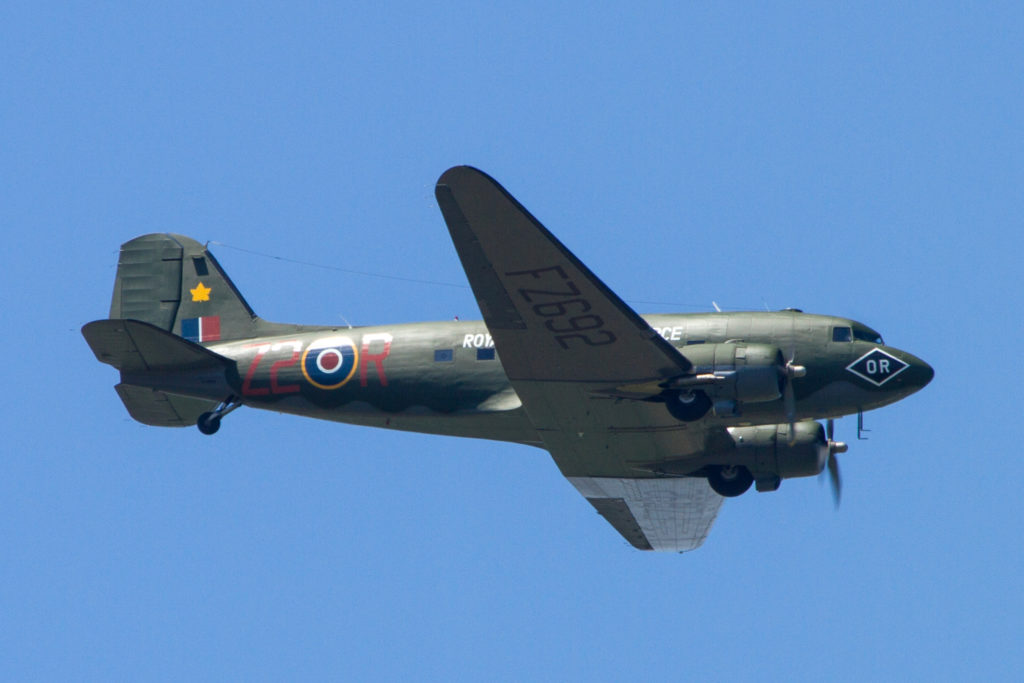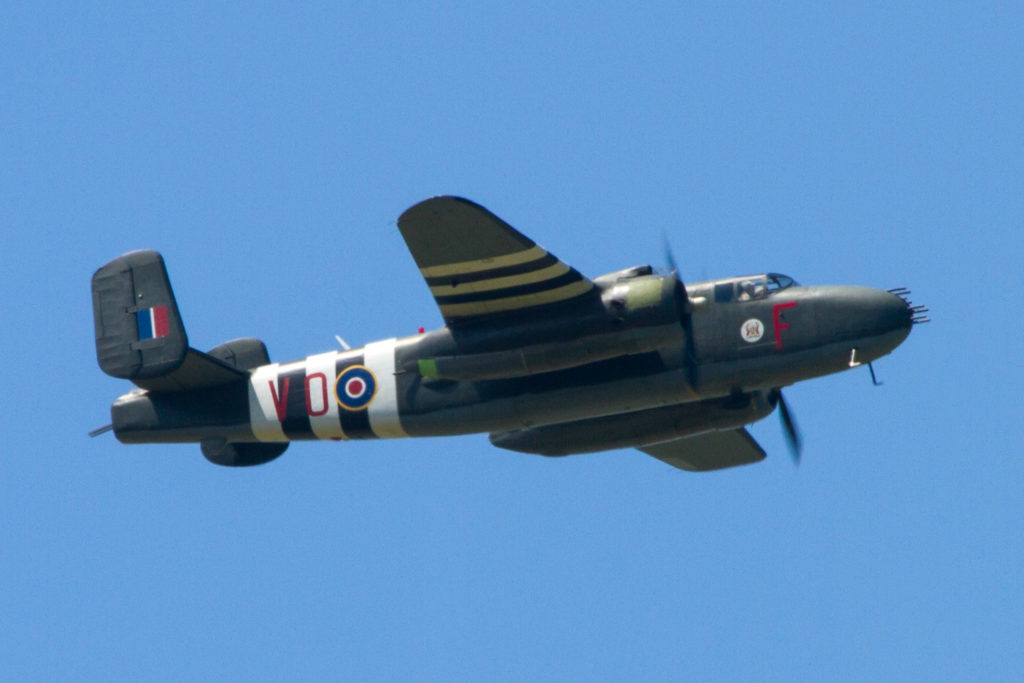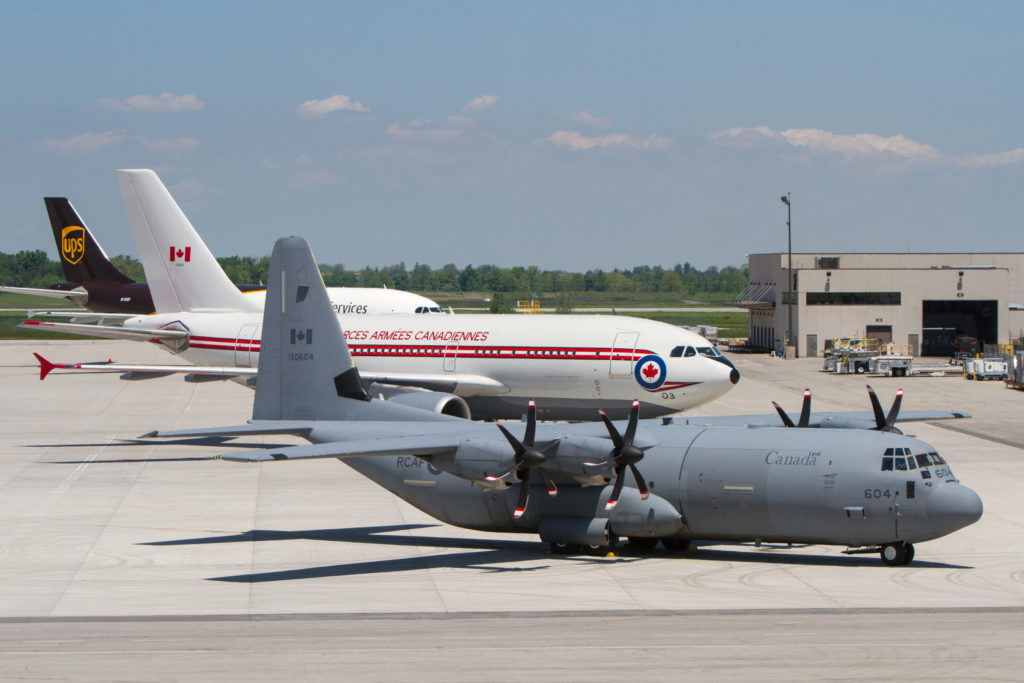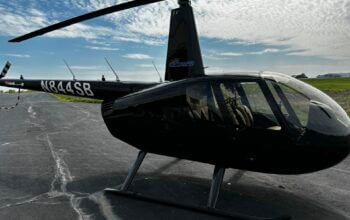Estimated reading time 6 minutes, 28 seconds.
Canadians celebrated the 75th anniversary of D-Day on both sides of the pond. The highest profile commemoration took place on June 5 at Portsmouth Harbour in England and on Juno Beach in Normandy on June 6 with thousands of Canadians, young and old, making the pilgrimage to the legendary battlefield with some of the highest Canadian casualty rates experienced in the Second World War.

Back home, ceremonies took place in many locations across Canada. One of the largest aviation events took place in Hamilton, Ont., at the Canadian Warplane Heritage Museum (CWHM). A flypast was organized with three historically significant museum aircraft and four Royal Canadian Air Force (RCAF) heavy transports.
Three CWHM warbirds led the formation. Opening the show was Douglas Dakota C-GRSB, appropriately a D-Day veteran itself. It was acquired by CWHM from its last government job with Environment Canada in 2014. It was built as a C-47A-5-DK by Douglas at Oklahoma City in February 1944 and briefly taken on strength with the United States Army Air Force. It was transferred under the Lend-Lease program to the Royal Air Force as Dakota III s/n FZ692 in February 1944. No. 45 Group ferried it to the U.K. in March 1944.
It participated in D-Day with No. 233 Squadron, Royal Air Force. At 11:16 p.m. on June 5, 1944, it departed RAF Blakehill Farm. Its Canadian pilot, J.P.R. McRae, delivered a full contingent of paratroopers into France to help establish inland support for the invasion.
The Dakota was later transferred to No. 437 Squadron RCAF in September 1944. After the war, it went on to serve with the RCAF and Canadian Forces until 1970. CWHM repainted the aircraft in its original 437 Squadron markings which it wore until the end of the war in the European Theatre. It made its first post restoration flight just days before the flypast, on June 3.

Joining the Dakota in the formation was the CWHM’s Avro Lancaster and North American B-25 Mitchell. Both types were involved in bomber support at D-Day, and the Mitchell wore the appropriate invasion stripes. It is painted in RAF No. 98 Squadron markings, which fought over northwest Europe during 1944-45. It is dedicated to the Canadians who flew with that squadron.
Joining the warbirds were four current RCAF aircraft, all based at 8 Wing, CFB Trenton. 437 Squadron presented its Airbus CC-150 Polaris. This year, 437 Squadron is also celebrating its 75th anniversary, and it painted this Polaris in a retro livery worn by another previous 437 aircraft, the Boeing CC-137 (707). Two Lockheed Martin CC-130J Super Hercules flown by 436 Squadron were next on stage. 436 Squadron flew Dakotas in the Far East at the end of the Second World War. Finishing up the flypast was a Boeing CC-177 Globemaster III flown by 429 Squadron. 429 Squadron flew Lancasters in the Second World War, and participated in the Normandy campaign. It also operated Dakotas, redesignated CC-129s, in the post-war years. All three of the current RCAF squadrons in the display flew the largest Second World War RCAF transport, the Douglas Dakota, at some point in their history.
The 75th anniversary of D-Day commemorative flypast flew over the Canadian Warplane Heritage Museum, and over the nearby Hamilton Golf and Country Club, where the Canadian Open Golf Tournament was getting under way. A number of veterans, hundreds of school children, and many aviation enthusiasts attended the event at the museum, and many learned a lot in the process.

These seven aircraft represent the RCAF “heavies” of two distinct eras. One student observed: “Our Air Force is on display, both past and present uniting to showcase air power from two different eras.”
All told, it was a heavy flypast for a heavy day.








